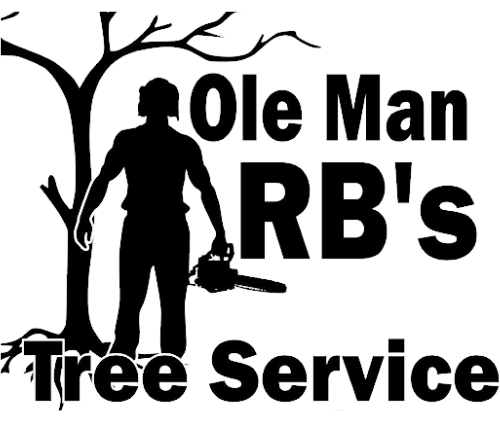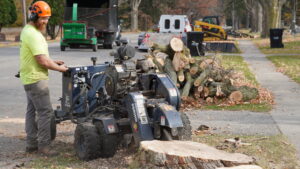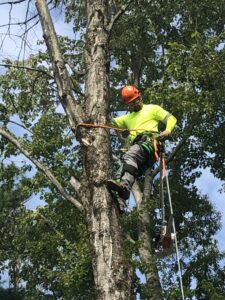Dead or dying trees aren’t just unsightly, they’re dangerous. They pose a serious risk to your property, loved ones, and surrounding landscape. While late fall and winter are often recommended for certain tree services, spring through summer is one of the most important times to remove dead trees especially in Michigan, where storms, heat, and humidity can accelerate decay and increase risk.
In this blog, we’ll break down why removing dead trees during the warm weather months is critical, how it protects your home and family, and what to know when hiring a professional tree service near me.
The Hidden Dangers of Dead Trees in Spring & Summer
As the snow melts and trees begin to bloom, one thing becomes crystal clear which trees didn’t survive the winter. While it’s tempting to focus on planting, mowing, or outdoor upgrades, ignoring a dead or decaying tree during the warm season can have serious consequences.
Dead trees are at their most unstable during spring and summer due to:
- Heavy rainfall softening soil and weakening roots
- Increased wind activity and summer thunderstorms
- Accelerated insect infestations (carpenter ants, beetles)
- Fungal growth and decay in warmer, humid air
In addition, warm weather means more people and pets are using the yard, increasing the danger if a branch or the entire tree suddenly fails.
Why Tree Removal in the Warm Months Makes Sense
1. Dead Trees Are Easier to Spot
Unlike in winter, when most trees go dormant, dead trees in spring and summer are highly visible. A tree that fails to leaf out, has large areas of missing bark, or is riddled with fungus stands out clearly. When you notice these signs, it’s time to search tree service near me and schedule an inspection.
2. Avoid Interference with Summer Projects
Homeowners often plan upgrades like fencing, landscaping, garden beds, or patios in the warmer months. Removing dead trees before these projects start ensures you won’t need to backtrack later or risk damaging new work if the tree collapses unexpectedly.
3. Liability and Insurance Risks
Dead trees located near property lines, homes, garages, driveways, or walkways are high-risk liabilities. If the tree or its branches fall and cause injury or property damage and it was clearly dead or hazardous you could be held responsible.
Worse, some insurance companies may deny claims if they determine the tree was a known hazard. Scheduling removal during the warm season prevents these legal and financial headaches.
Safety Risks: What Makes Dead Trees So Dangerous?
When it comes to dead trees, the safety risks multiply quickly in spring and summer due to weather patterns, increased outdoor activity, and the structural breakdown of the tree itself.
Structural Instability
Dead trees no longer have the strength to resist wind or bear weight. Their branches become brittle, and the trunk may be hollow or cracking internally even if it looks solid from the outside.
Falling Branches and Limb Drop
Large limbs can break off without warning in hot or humid conditions. These “sudden limb drops” are a leading cause of yard injuries in the summer and can damage vehicles, roofs, sheds, or outdoor furniture.
Rotting Underground Roots
Decay often begins at the base. Once the root system breaks down, the entire tree can topple over, especially during a storm or after heavy rain. If you suspect instability, don’t wait. Call a tree service near me immediately.
Electrical Hazards
Dead trees near power lines are an extreme hazard. They can collapse onto lines during storms or even during routine winds, potentially causing:
- Electrical fires
- Power outages
- Dangerous voltage risks to people or pets
These jobs should only be handled by licensed, insured professionals with utility coordination experience.
When You Should NOT Wait
Regardless of season, a dead or severely damaged tree should be removed immediately. Don’t wait until fall or winter if any of the following are true:
- Tree has no leaves while surrounding trees are green
- Branches fall during calm weather
- Fungus or mushrooms are growing at the base
- Insects are swarming around the trunk
- Cracks, splits, or cavities are visible
- The tree is leaning or shifting after rain or wind
If you’re seeing these signs, start with a search for tree service near me and request an evaluation as soon as possible.
Tips for Homeowners Planning a Warm-Season Tree Removal
- Don’t Attempt It Yourself
- Tree removal is a serious hazard especially when the tree is already compromised. Professionals have the equipment and training to bring it down safely.
- Book Early
- The warmer seasons are busy for most contractors. Booking early gives you more options for timing and often better pricing.
- Request Full Cleanup
- Ask your provider if stump grinding and debris removal are included. Leaving stumps behind can lead to pest issues or regrowth.
- Ask for Recommendations
- A good tree service will advise on whether removal is necessary or if trimming and treatment can preserve the tree.
Final Thoughts
Dead trees are more than just a landscaping nuisance they’re one of the most dangerous elements in your yard during Michigan’s warm seasons. From falling limbs to complete collapse, the risks only increase the longer you wait.
Whether you’re preparing for summer renovations or simply want to protect your property and loved ones, now is the time to act.
Search for Ole Man RB’s and schedule your warm-season tree evaluation and removal before the next storm hits.
Your yard and your peace of mind will thank you.





I like the efforts you have put in this, regards for all the great content.